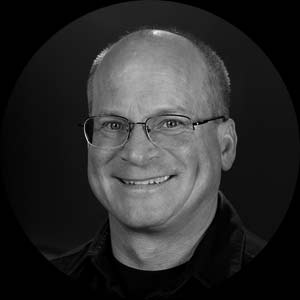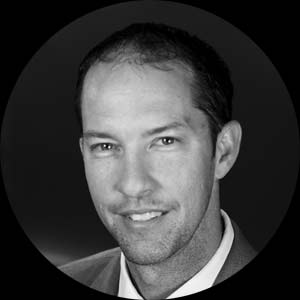WHY DID WE MAKE THIS DOCUMENTARY?

Tom Kleespie
Senior Producer
“During production of the Passing On documentary, we did the primary filming inside the rooms of dying patients with their families at a local hospital, Tucson Medical Center. Dr. Sue Taylor and Kimberly Romo were instrumental in gaining us access to those exceptionally personal and intimate moments.
In the late 1950s my sister Jeanne and I were born at TMC. Then less than 30 years later my daughter Lacy and son Nick were born there too. A quarter century passed and my mom spent most of her last week alive as a patient at TMC, before a few days at home in hospice. I had not been back since then.
On our first day of filming these scenes, with Laura Horvath and her lovely mother Barbara, it was a struggle to keep these intensely emotional yet untimely memories at bay. I purposely trailed behind Kimberly and Steve Riggs (director of photography) as we lugged our equipment through the hospital hallways, lest my emotions betray my attempted stoicism. We rounded one corner and I glanced out the window into a courtyard that I had purposely forgotten. It was there four years before that I called my aunt Helen, mom’s older sister and best friend, to tell her that mom had decided to go into hospice. Needless to say, I was happy we had a ways farther to walk and no need for me to converse. It seemed like we walked past that courtyard every time we went back to TMC, and each time it reminded me of what those difficult situations can be like for the patients and their families.
From my own experiences, I can’t imagine the strength required to invite a film crew to share those final moments with a loved one. Yet many families did. And I can’t thank them enough. No matter how good our experts on death and dying are, and we had some of the best in the world, it is the stories of these patients and their families that is the heart of this documentary. Thank you again for sharing with us. ”

John Booth
Executive Producer
“I have lost many people over the past decade - people I was extremely close to. I was a long-term caregiver to my mother-in-law, Francis, as she slowly succumbed to Alzheimer's disease. My wife, Connie, and I cared for her in our home, through palliative and then hospice care. Not long after Francis passed, I stood by Connie’s side through palliative and hospice care as she died of cancer. I had to make many personal and practical decisions while deep in the fog of grief. Looking back, I now realize Connie had been looking after me all the while, as she had recorded her mother’s end-of-life wishes and her own long before she passed.
Passing On gave me a unique opportunity to help tell the sensitive, powerful stories of people facing their own mortality, of the family and friends caring for them, and of the medical professionals trying to ease their patients’ pain and the families’ burdens. I am in awe of the bravery, grace, and generosity of the people who shared their own or their loved one’s final days. Each experience serves as a reminder of the importance of making our own wishes known to our loved ones and our healthcare providers, thus relieving them of the need to guess when our time comes.”

Steve Bayless
Senior Editor
“I learn from each and every project I work on. None more so than Passing On. We were very blessed to have so many participants open their homes and hearts to us. They shared their stories and their struggles. This is the kind of storytelling that does not need to be sugar-coated. It is the eventuality that we will all face. In editing the documentary, we made the decision to let these folks express their thoughts at their own pace. We did not want to rush them. This is real "reality" and we hope their words linger in the minds of our viewers. Personally, it made me question my own end-of-life decisions and realize that I hadn’t made any. That spurred a conversation with my spouse and the first steps towards making a plan for ourselves.”

Steve Riggs
Director of Photography
“Based on my religious and personal beliefs, I haven’t been afraid of the topic of death and dying. I enjoy the sentiments by the late Steve Jobs: "No one wants to die. Even people who want to go to heaven don’t want to die to get there. And yet, death is the destination we all share. No one has ever escaped it."
Death and dying is not a topic that is fun to talk about, yet it is a topic that needs to be discussed. One of my big takeaways from this documentary is that, although we don’t get to choose how we will pass away, we do have a choice about our final wishes, and how we choose to be treated leading up to the end of our days.
From some of our first production meetings, I was intrigued to learn that one in seven dollars earned over an entire lifetime is used in the last six months of our lives. Would we like to be in a hospital? Would we like to be at home with our loved ones? Doctors will do all they can to try and help us continue to live. Do we want that? Do we want more than what they can provide? Do we have legal documentation to support any of these wishes?
As Principal Videographer, I was able to break out of my comfort zone and try new things visually. My background is in local commercial television, with fast-paced, close up shots. Get it, get it quick, and get it on television even quicker. I had to change my typical video storytelling habits when considering these potential scenarios. Space and time became items to consider when framing video and pacing the edits.
What does one typically see when visiting someone in a nursing home? What do people who are nearing the end of their years have a lot of? Think of space: A single bed, emptiness. Think of time: Time to heal, to think, to ponder.
I couldn’t be fast-paced with Artemisa Galván in the last days of her life, with her family coming in from different parts of the country to say their final goodbyes. I couldn’t bring in lights when all the space in her hospital room was being used to keep her alive a little bit longer. There were only time and tender moments left to be captured. Sit. Wait. Listen. Adrian, her godson, consoling Artemisa, lets her know that she is loved and it is okay to feel the way she does.
Space. Time. Waiting. Thinking. Pondering. Listening. Watching. This is what I am focused on with my camera, not ratios of light and getting something done quickly. Can I properly capture the moment without being obtrusive?
Can I at all capture the moment of someone passing on? For me, the answer here is no. All I can do is wait and be patient and let you experience those tender moments.
We are grateful to Adrian, Dolores, Jim, Mary, Ruby, and all those who allowed us to share these very real, very tender moments as we convey their last days.
Join me from a visual perspective to take note of the open rooms and the unlit interviews, and allow these scenes to help you determine how you would prefer to pass on. ”